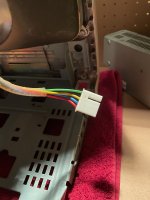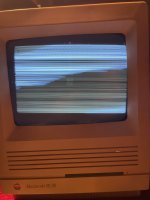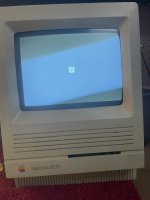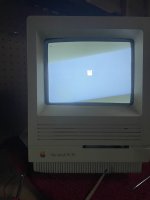I didn't touch the connector, I don't know those CRTs well enough to play around with the pinout. I simply removed the yoke altogether on both CRTs, taking note which way the connector was pointing (roughly), and reinstalled the one that goes with the analog board on the good CRT.
Some info on how to take it out (there's only one screw to loosen, try with the dead CRT first)
https://oldcrap.org/2019/05/03/inside-macintosh-crt/
The part relevant for you:
First you will need to remove the tube from the case and disconnect it from the analog board. This is the dangerous part of the job, because the tube will likely contain an electrical charge. You need to discharge it prior to removing the flyback electrode. There is
a good video about it and it really works.
To disassemble a Macintosh CRT, first start with removing the deflection yoke. It is very easy, unscrew the ring screw and gently pull the yoke from the CRT. Yoke’s purpose is to
scan the electron beam over the screen horizontally and vertically.
Then there's the adjustment. You shouldn't have to twist any of the magnets (only if the display is not rectangular, do it last if that's the case).
The deflection yoke can be rotated or moved forward/back. If available, I'd place the Mac on a glass table facing down (that way you won't have to deal with the forward/backward adjustment). Don't tighten the screw all the way, plug
everything back, and turn it on. If the display is tilted, turn it back off, wait a bit, and gently rotate the yoke accordingly. You could also do it while powered on, but if it's your first time, I wouldn't risk it. Just take your time!
Also, that screw tightens the collar, so don't tighten it too much, just so that it won't move or you'll break the CRT's neck!





